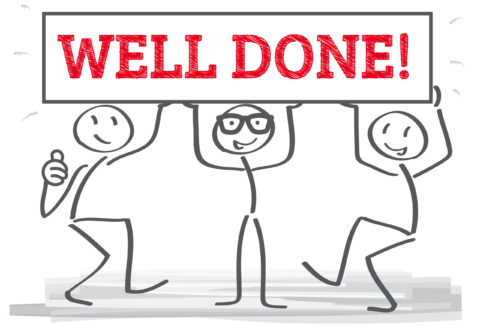The Effectiveness of Contingency Management: A Game-Changer in Behavioral Change

The Effectiveness of Contingency Management: A Game-Changer in Behavioral Change
In the landscape of behavioral interventions, one approach stands out for its remarkable effectiveness: contingency management (CM). Widely hailed as a game-changer in promoting positive behaviors and curbing maladaptive ones, CM has garnered attention for its evidence-based strategies and tangible results. Let’s explore the effectiveness of contingency management and its transformative impact across diverse domains.
Understanding Contingency Management
At its core, contingency management operates on the principles of operant conditioning, pioneered by behavioral psychologist B.F. Skinner.[1] This approach emphasizes the role of consequences in shaping behavior, where positive reinforcement enhances desired behaviors, and negative reinforcement diminishes unwanted ones. CM harnesses these principles by offering incentives to reinforce target behaviors, ranging from substance abstinence to treatment adherence and beyond.[2]
Unparalleled Success in Addiction Treatment
Contingency management has emerged as a cornerstone of addiction treatment, demonstrating unparalleled success in promoting abstinence and facilitating recovery. Numerous studies have showcased its effectiveness across various substance use disorders, including alcohol, cocaine, and opioids. By providing tangible rewards such as vouchers, prizes, or privileges contingent upon drug-free urine samples, CM motivates individuals to maintain sobriety and engage in treatment.[3]
Extending Beyond Substance Use Disorders
While CM’s roots lie in addiction treatment, its effectiveness transcends the realm of substance use disorders. Research has highlighted its efficacy in addressing diverse behavioral challenges, from smoking cessation[4] and weight loss to medication adherence and HIV prevention. By tailoring incentives to target specific behaviors and goals, CM offers a versatile toolkit for promoting positive change across populations and settings.
Empirical Evidence and Real-World Impact
The effectiveness of contingency management is not merely anecdotal; it is substantiated by a wealth of empirical evidence.[5] Meta-analyses and systematic reviews consistently affirm its superiority over standard treatments, showcasing significant reductions in substance use, increased treatment retention, and improved clinical outcomes.[6] Moreover, CM’s impact extends beyond research settings, yielding tangible benefits in real-world clinical practice and community-based programs.
Addressing Criticisms and Challenges
Despite its undeniable success, contingency management is not immune to criticisms and challenges.[7] Some skeptics raise concerns about its cost-effectiveness, sustainability, and potential for fostering dependency on external rewards. Moreover, logistical barriers, ethical considerations, and cultural sensitivities may pose hurdles to its widespread implementation. Nonetheless, ongoing research and innovation seek to address these challenges and optimize CM’s effectiveness in diverse contexts.
Conclusion: A Beacon of Hope in Behavioral Change
In the quest for effective interventions to combat addiction and promote healthy behaviors, contingency management shines brightly as a beacon of hope. Its evidence-based approach, rooted in behavioral principles, offers a potent tool for fostering lasting change and improving outcomes. As we continue to unlock its potential, contingency management stands poised to empower individuals, transform lives, and pave the way towards a brighter, healthier future.
Join us for our upcoming series on Contingency Management, airing Mondays at 7pm and Saturdays at 10am and 11am. We look forward to seeing you there as we learn together to enhance the work we do for the benefit of our patients and clients.
[1] Skinner, Burrhus F. “Operant conditioning.” The encyclopedia of education 7 (1971): 29-33.
[2] Zajac, Kristyn, Sheila M. Alessi, and Nancy M. Petry. “Contingency management approaches.” The Routledge handbook of philosophy and science of addiction. Routledge, 2018. 455-463.
[3] Kropp, Frankie, Daniel Lewis, and Theresa Winhusen. “The effectiveness of ultra-low magnitude reinforcers: Findings from a “real-world” application of contingency management.” Journal of substance abuse treatment 72 (2017): 111-116.
[4] Ledgerwood, David M. “Contingency management for smoking cessation: where do we go from here?.” Current drug abuse reviews 1.3 (2008): 340-349.
[5] Rash, Carla J., Maxine Stitzer, and Jeremiah Weinstock. “Contingency management: New directions and remaining challenges for an evidence-based intervention.” Journal of substance abuse treatment 72 (2017): 10-18.
[6] Davis, Danielle R., et al. “A review of the literature on contingency management in the treatment of substance use disorders, 2009–2014.” Preventive medicine 92 (2016): 36-46.
[7] Randall, Jeff. “Challenges and possible solutions for implementing contingency management for adolescent substance use disorder in community-based settings.” Journal of Child & Adolescent Substance Abuse 26.4 (2017): 332-337.






